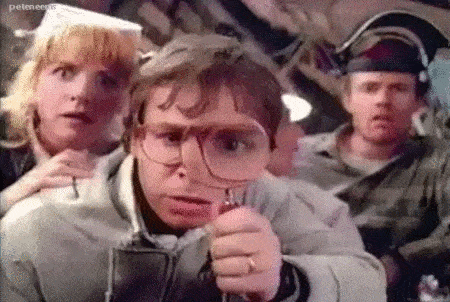
If only every day could be like today – productive, profitable and stress-free with nothing but happy customers and cheerful employees as far as the eye can see.
Experts in personal happiness tell us to live fully in this moment. There is no need to spoil it by worrying about potential future problems or dwelling on challenges of the past.
However, responsible communicators the world over remind us that this is the perfect time to think about how to handle the next time our beautiful, peaceful business day is suddenly and unexpectedly wracked by a crisis.
Luckily, there is a simple 4-step process to properly prepare for the worst long before it occurs. (The best time to buy a snow-shovel, after all, is in July.)
Step 1: Write an organizational Crisis Communication Plan

Let’s assume that our organization already has an operational crisis plan that outlines how we will function though a crisis that interrupts the status quo. (If not, we need to talk with our COO and/or chief safety officer right away to get this underway!) We should write our crisis communication plan to compliment and support the operational structure. The plan should:
• Define a crisis and when the plan should be activated
• Define roles of communicators (remembering that reporting and approval structures in a crisis are often different than during normal operations)
• Lay out clear and concise processes to ensure timely flow of information both internally and externally
• Include check lists, contact information and pre-approved messaging to avoid omissions and missteps that can occur under duress
Depending on the nature, size and scope of our business, writing a plan to cover likely scenarios with the necessary level of detail can require input from multiple stakeholders.
Step 2: Train communications team on new plan

The most dangerous moment for our organization is now – just after we have completed our shiny new plan. We are tempted to celebrate its completion, give it a place of honor on our shelf, and not think about it again until a crisis occurs. By then, we won’t know for sure if the contact people throughout are still in the correct roles, if our pre-approved messaging is still current (and approved), or if anyone else listed in the plan knows that we should use it.
As soon as the plan is complete, a one- or two-day training should be planned for everyone with a defined role along with at least one leader from the operational crisis plan.
The first half of training should include a detailed discussion of our crisis communication strategy, the role of each participant and how each relates to the larger group, and how to manage crisis messaging through each channel.
The second half of training should be a drill simulating a likely crisis scenario that creates adequate chaos through which the team must function and communicate. The goals of the training are to:
• Identify gaps in the plan that need to be addressed and filled
• Allow team members to practice how to work together in their crisis-specific roles
• Familiarize team members with the idiosyncrasies of crisis communications
• Identify areas that may require additional training
Step 3: Analyze and review

Once we have completed training and the drill, we must organize discussion points, feedback and data to truly assess our level of preparedness.
What king of data?
• During the drill, how long did it take for the first announcement or message to be developed and delivered?
• What was the average response time to media calls?
• What was the average lag time for the operational leader to share important new information with the communications team?
• Did messaging cover all key points?
• What roles written in the plan weren’t a good fit in practice?
Step 4: Update and repeat

A good communicator’s work is never done, and that goes especially for crisis communication preparation.
Once we have our plan and training analysis, we start the work of filling gaps, tweaking messaging and redefining roles. Then, we train again!
Most organizations can and should complete this process about twice a year.
Here at Doe, we have a team of crisis communicators who help clients large and small prepare for their worst days during their best days.
That may sound to some as gloomy work. On the contrary!
We get to know our clients well and help them learn to utilize their strengths when they need them most. This is rewarding sunny-day work.
And, when it starts to rain, we’re there to help them weather the storm.
)
)